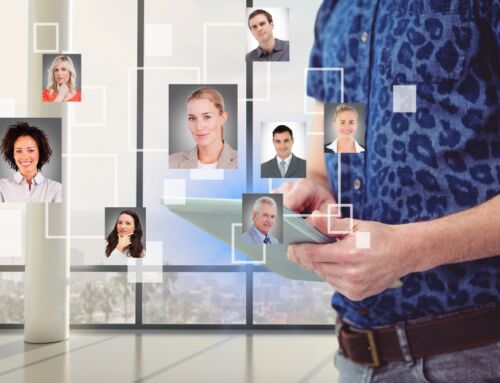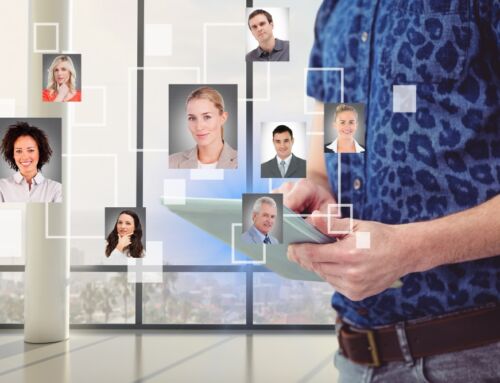AI has transformed human resources (HR), leaving outdated methods and systems in the dust. For HR teams and professionals, paper resumes are relics, payroll spreadsheets are history and manual compliance tracking is a nightmare of the past.
Traditional methods not only drain time and money but also open the door to costly mistakes and dissatisfied employees. Imagine going through thousands of resumes manually when AI can quickly identify the top candidates for you. In dealing with payroll mistakes, AI can prevent those errors from happening in the first place. This isn’t just improvement—it’s reinvention.
Image by FreePik
Key Benefits of AI in HR
The impact of AI in HR is significant. Here’s how AI provides the tools and capabilities HR teams and professionals need to transform their operations:
- Boosting efficiency and reducing costs: By automating tasks like scheduling and resume screening, AI allows HR staff to dedicate more time to strategic, high-value activities. This reduces administrative costs and boosts overall productivity.
- Enhancing decision-making: Your HR managers can use AI tools to gain insights into talent acquisition, performance management, and employee engagement.
- Improving candidate experience: AI chatbots streamline the recruitment process by answering questions, scheduling interviews, and providing feedback for better candidate experience.
- Eliminating bias: AI ensures hiring decisions are based on objective criteria to eliminate biases in talent recruitment and evaluation and promote fairness and diversity.
- Facilitating employee engagement: By analyzing employee sentiment through emails, surveys, and social media, AI helps your HR team identify and address concerns early and build a positive work environment.
- Innovating talent development: By using AI to analyze employee performance, your HR team can identify skill gaps and design targeted training programs to ensure employees acquire the needed skills to stay competitive.
Ai-Powered Recruitment and Talent Acquisition
Let’s explore how AI enables faster and smarter hiring through the following discussion:
Automated Candidate Sourcing
80% of employers report difficulty filling job openings due to a lack of candidates with the right skills.
AI tools with multi-platform outreach features solve this by scanning job portals, social media platforms, and databases to find qualified individuals who haven’t applied and automatically engage them.
AI screening tools also use Natural Language Processing (NLP) to analyze thousands of resumes instantly and identify key skills, experiences, and qualifications that match job descriptions, which helps you prioritize the most suitable candidates.
Streamlined Interview Processes
HR staff can use AI robots to conduct one-way video interviews. Applicants record their answers to preset questions, and the robots evaluate candidate responses, including word choice, body language, facial expressions, and talk time ratios.
Based on this analysis, they generate a score to assess the candidate’s fit for both the company and the specific role.
Predictive Analytics in Hiring
Predictive analytics in AI-powered recruitment leverages data from past hires, ideal candidate profiles, and successful employees to forecast which candidates are most likely to succeed in specific roles.
It also uses insights from past employment cycles and trends to predict periods of high labor demand. This helps you improve the quality of hires, build a stronger talent pipeline, and reduce time-to-hire.
Employee Onboarding and Training With AI
Onboarding and training are critical stages in an employee’s journey, as they lay the foundation for long-term success. Below are the ways AI innovates these processes:
Personalized Onboarding Experiences
AI transforms onboarding by moving away from traditional paperwork and generic introductions and offering personalized experiences instead. It customizes new hires’ journeys based on their role, interests, background, and learning pace.
Thus, AI can be used to create targeted career maps, deliver tailored hands-on courses, and assign appropriate mentors at the right moments. This makes new employees feel supported and valued while accelerating their integration and success from day one.
AI in Employee Training and Development
Many companies are now combining Artificial Intelligence (AI) with Augmented Reality (AR) and Virtual Reality (VR) technologies to upskill their employees creatively and effectively.
For example, VR Owl, an AR and VR content agency, shared a case study of Bank of America, which uses both VR and AI to enhance its staff’s communication and customer service skills.
The bank leverages these technologies to simulate complex, realistic scenarios in interactive online environments, such as when customers apply for loans and trains employees on how to respond professionally.
Payroll and Compliance Automation
Traditional approaches to payroll processing and compliance management are not only time-consuming but also prone to mistakes, which can result in financial and legal consequences. Fortunately, AI offers these solutions:
Automating Payroll Processing
AI-driven automation allows HR staff to collect payroll data from various sources, such as tax forms, employee databases, and time and attendance systems, and make precise calculations of taxes, wages, taxes, deductions, and contributions. This aids in addressing payroll mistakes related to manual data entry while reducing processing costs.
Additionally, AI algorithms can detect duplicate payments, discrepancies in overtime hours, and other irregularities for timely intervention and fraud prevention.
Simplifying Compliance Management
Unlike traditional compliance methods that rely heavily on time-consuming, error-prone, and costly manual inspections and audits, AI enables smart, automated monitoring to improve adherence to laws, regulations, and policies.
With AI, you can track transactions, communications, and activities in real-time and receive instant notifications for violations like unauthorized data access or safety breaches.
Adaptive AI models also recognize trends and patterns from past incidents and generate predictive alerts for you to evaluate and mitigate compliance risks before they escalate.
AI in Performance Management
With AI, your HR managers and staff can obtain the right data at the right time to provide employee feedback without hassle and conduct performance appraisals without bias. Here’s how:
Continuous Feedback Systems
A Gallup study published by Psico Smart found that organizations nurturing a culture of continuous feedback see 14.9% lower turnover rates than those that don’t.
AI-powered continuous feedback systems interpret data from customer interactions, team huddles, managerial evaluations, and self-assessment surveys to provide timely, meaningful, and comprehensive insights into employee performance.
Such communication and transparency allow you and your managers to promptly address concerns, reinforce positive behaviors, distribute recognition, and build strong working relationships.
Objective Performance Reviews
Traditional performance evaluations can be influenced by biases like the halo effect, where a single positive trait skews the overall rating. Leniency and severity biases also affect the process, with reviewers giving overly generous or unfairly low ratings.
AI, however, uses predefined criteria and performance metrics to ensure evaluations are based solely on merit.
Challenges of Implementing AI in HR
While AI offers numerous benefits to HR, its implementation can pose challenges. Below are the common obstacles when adopting AI technologies:
Data Privacy and Security Concerns
The biggest concern for HR when using AI is data privacy and security. AI systems collect large amounts of data, but many are inadequately trained to handle such data. If AI cannot properly anonymize or remove sensitive information, it will be vulnerable to unauthorized access or security breaches.
Additionally, AI is now increasingly being used in cybersecurity threats, including phishing, ransomware, and impersonation scams. In fact, 40% of phishing emails targeting businesses are now generated by AI.
Integration With Existing Systems
Integrating AI with existing systems can be challenging. Companies and businesses must have the right HR management software that can work smoothly with AI systems and support seamless data flow.
The integration should enhance efficiency without disrupting their current processes. Critical steps include identifying specific scenarios for AI applications and fine-tuning AI models to fit those needs.
Conclusion
AI has completely redefined HR, replacing manual operations with intelligent automation. Recruitment is faster and sharper, as AI identifies top talent and screens resumes in mere seconds. Interviews become data-driven, with AI evaluating candidates through precise metrics for more informed decisions.
Onboarding shifts from generic to personalized, making every new hire feel valued. Employee growth accelerates with AI-guided training, while payroll and compliance run flawlessly. Continuous feedback nurtures a growth-oriented culture, and performance reviews become unbiased and fair.
Despite challenges in integration and data security, the transformative power of AI in HR is undeniable.







Leave A Comment